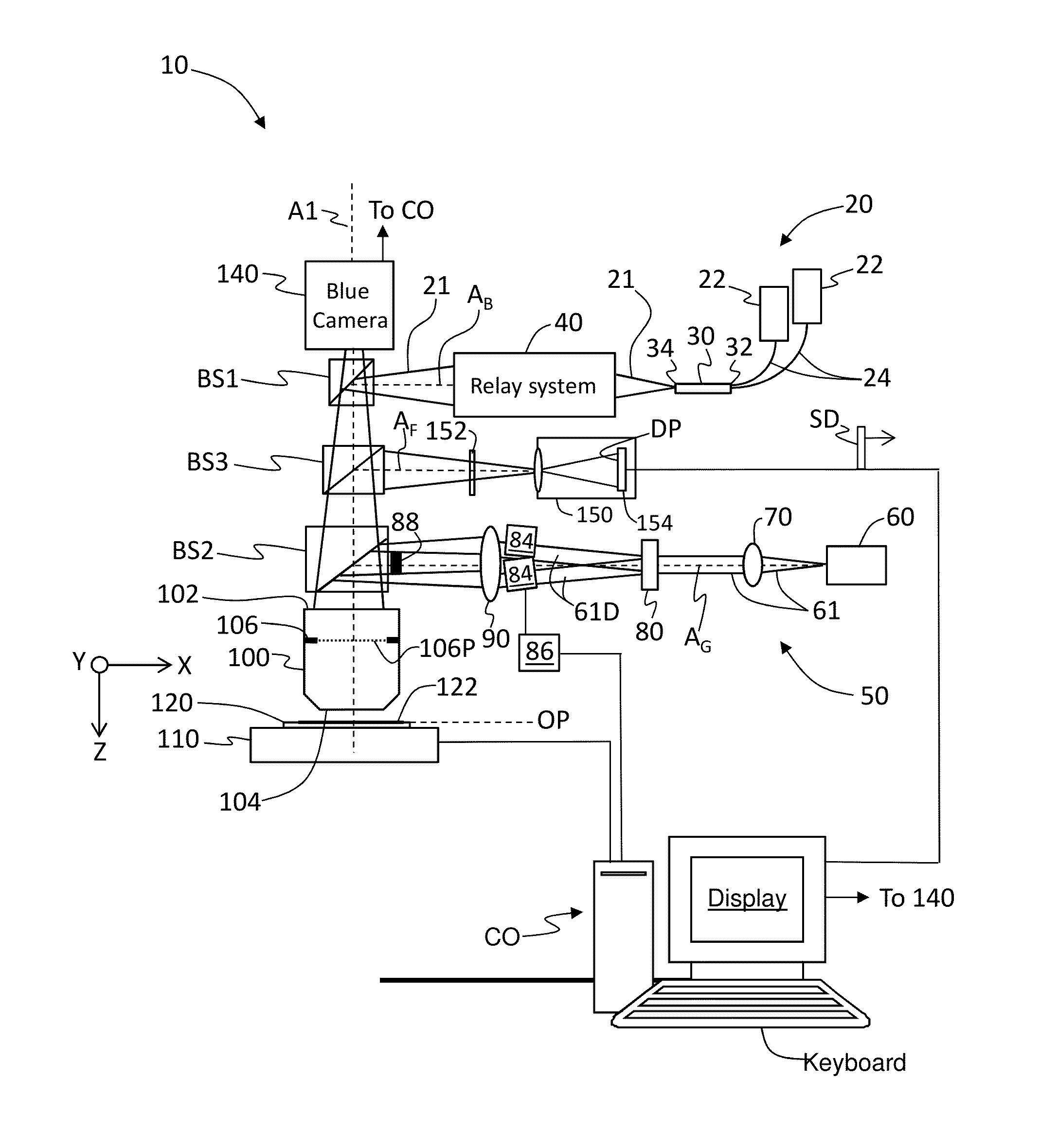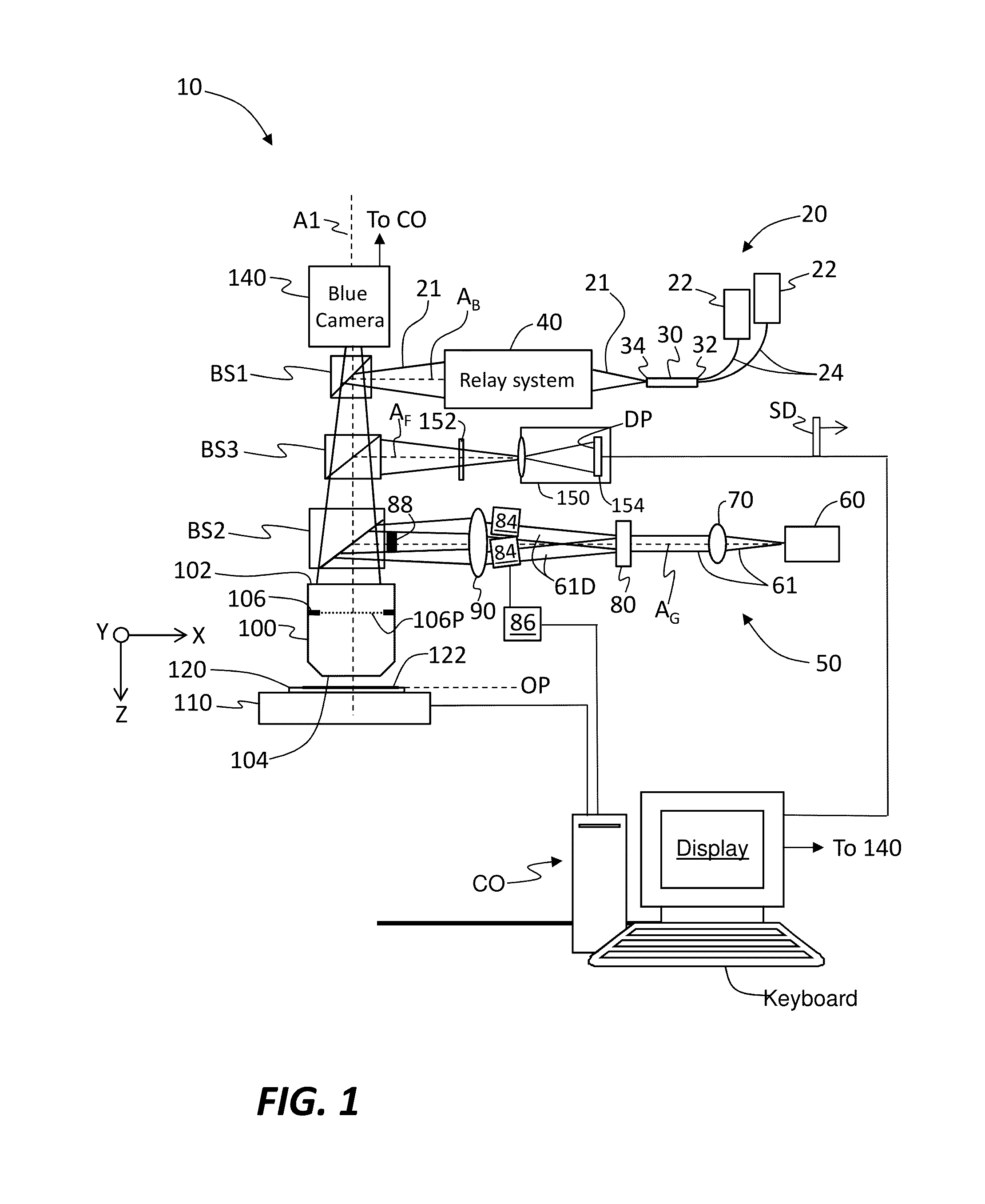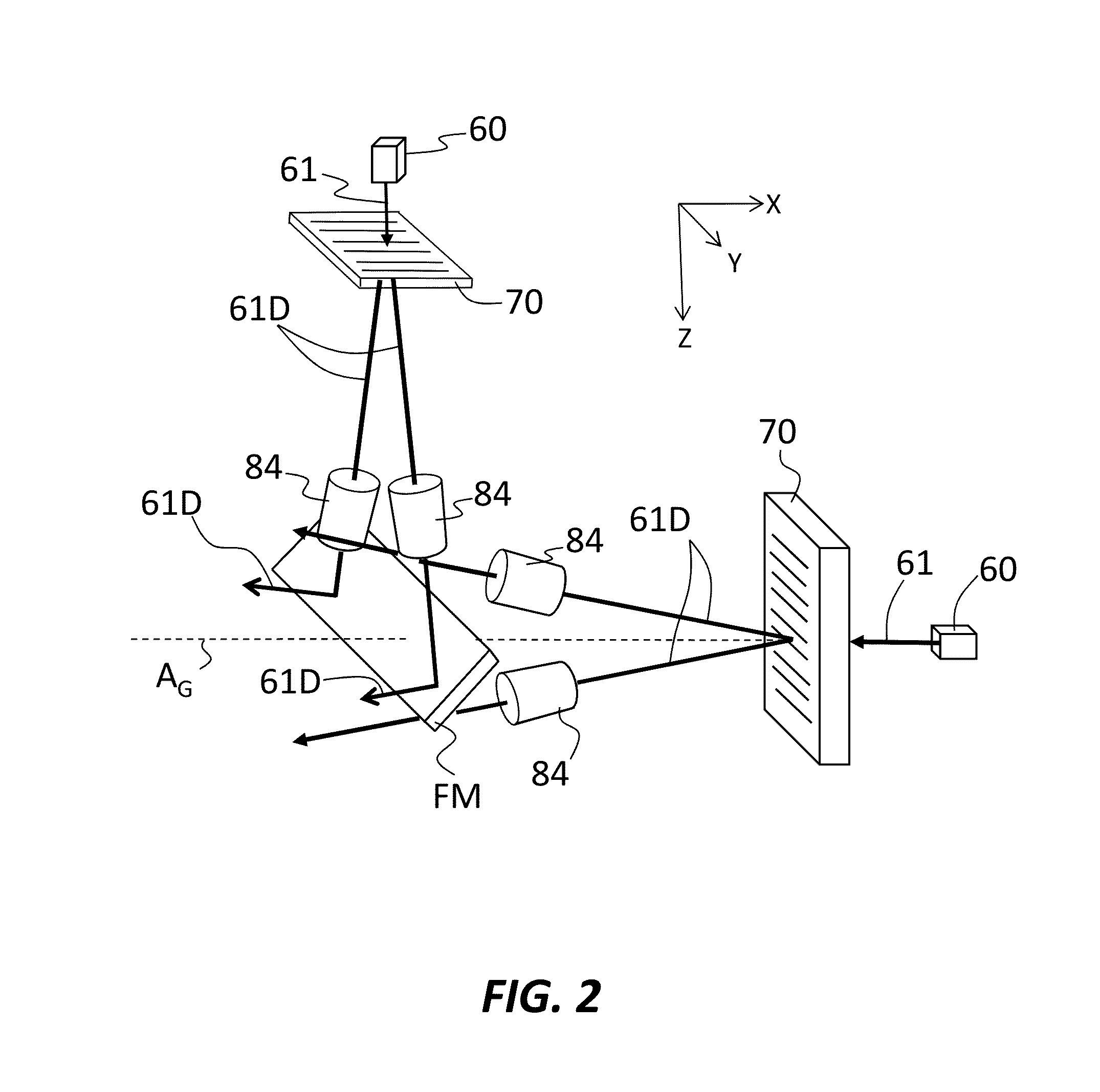Apparatus and methods for microscopy having resolution beyond the Abbe limit
a microscopy and abbe limit technology, applied in the field of microscopy, can solve the problems of limited resolution, limited resolving ability of microscopy, and limited na maximum value, etc., and achieve the effect of reducing the amount of fluorescing area, and increasing the potential resolution
- Summary
- Abstract
- Description
- Claims
- Application Information
AI Technical Summary
Benefits of technology
Problems solved by technology
Method used
Image
Examples
numerical example
[0118]A numerical example is now presented as based on the following assumptions:
Size of photodetector 154 (detector array): 1,024 by 1,024 detector elements DE
Size of individual detector element DE: 3×3 microns
Green (inhibition) wavelength λ2=532 nm
Blue (activation) wavelength λ1=405 nm
Objective lens NA=0.9
Resolution required=25 nm
The green and blue intensity values c·G and B can be obtained from the equation for resolution, namely: IW′=(λ2 / π·NA)·arcsin((0.6B / cG)0.5)
25 nm=(532 nm / π·0.9)arcsin((0.6·B / cG)0.5))→c·G / B=33.8
[0119]To obtain a resolution of 25 nm, it is necessary to have a green-to-blue intensity ratio cG / B=33.8. This assumes that the fluorescence generated by one watt of 405-nm blue light will be suppressed by the equivalent of one watt of 532-nm green light. The equivalence depends on the value of the constant c.
[0120]This improvement in resolution is achieved by reducing the size of the emitting areas 124 on object 122 and is not directly seen on photodetector 154. The ...
PUM
| Property | Measurement | Unit |
|---|---|---|
| wavelength | aaaaa | aaaaa |
| wavelength | aaaaa | aaaaa |
| activation wavelength | aaaaa | aaaaa |
Abstract
Description
Claims
Application Information
 Login to View More
Login to View More - R&D
- Intellectual Property
- Life Sciences
- Materials
- Tech Scout
- Unparalleled Data Quality
- Higher Quality Content
- 60% Fewer Hallucinations
Browse by: Latest US Patents, China's latest patents, Technical Efficacy Thesaurus, Application Domain, Technology Topic, Popular Technical Reports.
© 2025 PatSnap. All rights reserved.Legal|Privacy policy|Modern Slavery Act Transparency Statement|Sitemap|About US| Contact US: help@patsnap.com



